How to Choose Flawless Wall and Trim Color Combinations
Use these tips to select a trim color that will showcase walls and add a finishing touch to your space.
Your paint decisions aren't quite finished once you've selected the perfect wall color. You now need to choose a trim paint for ceiling molding, doors, baseboards, and other details so your wall and trim color combination works with the overall space. Molding or trim helps define a room's style, adding architectural character and dimension to the walls. At the same time, window and door molding and baseboards also serve the practical purpose of concealing the gaps that exist in most houses. These essential elements present an opportunity to inject fresh color into a room or emphasize certain features.
Whether you prefer molding to blend in or stand out, these tips on choosing wall and trim color combinations can help you create a look you'll love.
Related: How to Choose Interior Color Schemes You’ll Love
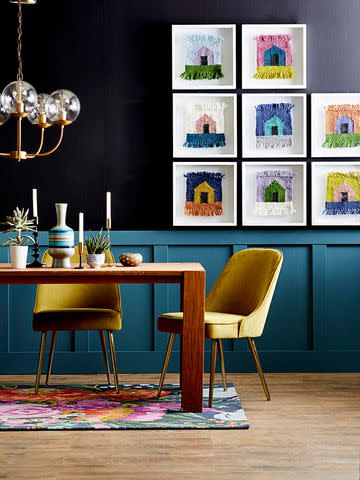
Tips for Choosing Trim Colors
As a general rule, plan to paint all the trim throughout the main areas of the house the same color to create a unified effect from room to room. You might want to play around with more unique wall and trim color combinations in more personal spaces, such as bedrooms and bathrooms.
Within a room, paint all of the trim the same unless you wish to emphasize elements. For example, a salvaged antique mantel might be left stripped and unstained, while the baseboard, crown molding, door frames, and window frames are all painted creamy white. To play up wainscoting or another interesting wall treatment, you can paint the baseboards a similar color but paint all window and door frames white.
Related: 7 Colorful Millwork Ideas to Highlight Your Home's Architecture
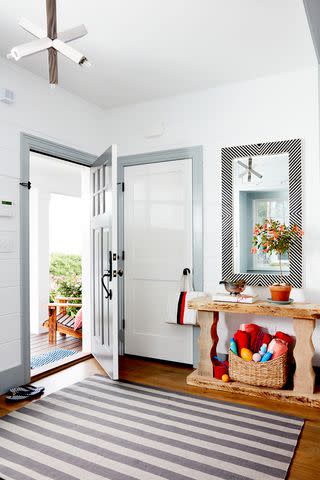
Before investing in enough paint for the job, buy a quart and test it on a poster board. Place the board against the wall to see how they look together before you begin painting the trim.
It's typically best to choose a gloss or semigloss enamel rather than flat-finish paint for doors, window frames, and door frames. Glossier paint is more durable, and its reflective quality plays up light and shadows.
Related: 5 Paint Mistakes That Can Make Your Walls Look Dirty

How to Choose the Best White Trim Paint Color
If your walls are painted a color, whether soft or bold, white trim is practically guaranteed to set them off well. In rooms with dark or intensely colored walls, white trim lightens and brightens, accenting the strong hue and bringing visual relief. White trim makes the color look cleaner and clearer in rooms with light or pastel walls while introducing a hint of contrast.
When selecting a white paint color for trim, remember that your choices include more than just stark white. Most paint manufacturers offer a range of whites that vary from warm to cool. And in some cases, the lightest shade on a paint card could function as white does when juxtaposed with your wall color.
To pick the right white trim color, start with the paint chip of your wall color and hold it up to a variety of white or pale neutral chips to see which ones you like. Creamy white tones pair nicely with warm or intense colors and earthy neutrals, while clear or crisp whites make good partners for cool colors, both saturated and muted.
Related: How to Transform a Room with Crown Molding
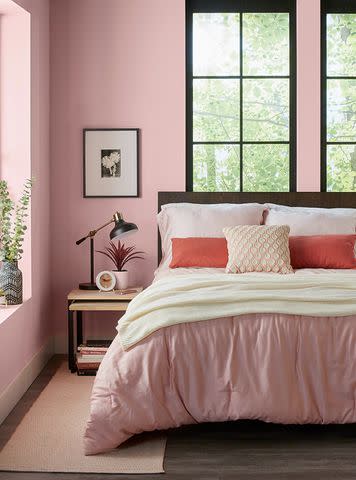
Wall and Trim Color Combinations
Your options for wall and trim color combinations go beyond white trim and a colored wall. For example, painting the trim and woodwork darker than the walls focuses attention on window and door frames. If you love color, consider painting the trim a contrasting hue equal in intensity to the wall color. Window treatments, fabrics, furniture, area rugs, and accessories are all excellent sources of color inspiration. Choose the lightest or brightest hue for the major wall surfaces, a darker color for the window and door frames, and a third, medium tone for window sashes and skirting boards (the board under the windowsill).
If your walls are pale, you can emphasize windows, doors, and other architectural features by painting them with a soft, contrasting hue. Alternatively, darker window trim frames the view of the outdoors like a mat frames a picture. Off-white or cream and contrasting wall and trim color combinations (such as gray-blue, muted green, mustard yellow, or barn red, for example) recall colonial-style interiors.
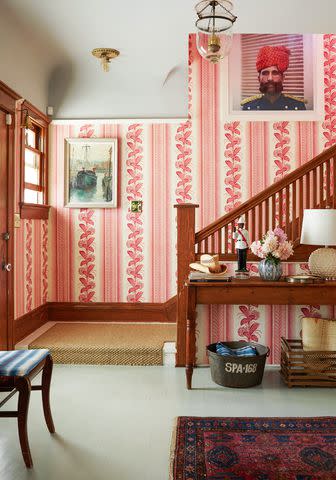
Color Ideas for Wood Trim
Trim in natural wood tones can give rooms a sense of warmth and history. However, use caution when pairing richly stained wood trim with light-colored walls. Because darker trim against light walls calls so much attention to the woodwork, consider whether your woodwork is worth the notice.
Homes built in the late 1800s and early 1900s, particularly in the Arts and Crafts or Victorian styles, often feature a wealth of oak woodwork stained or varnished to produce a medium brown or honey gold. Ranch-style houses in the 1950s and 1960s favored simpler, narrower moldings, but the unpainted look prevailed. Leaving the trim and doors a natural color plays up the beautiful texture of the wood and brings warmth to interiors.
Related: Here’s What Distinguishes the Most Popular American House Styles
The wall and trim color combination impact on your rooms will depend on whether you only varnish the wood (which doesn't significantly alter the natural hue) or stain the surface first. Stain contains dyes or pigments that color the wood without hiding the grain. A full range of colors is available, including bleached gray-white, golden yellow, reddish-brown, dark brown, and ebony.
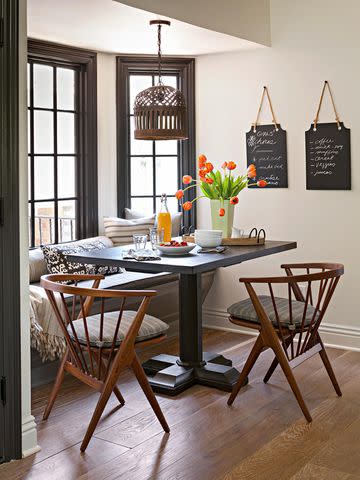
Choose your stain color according to the look you want to achieve. Medium- to dark-brown stains tend to create a visually heavier feeling, while lighter, honey-toned, or golden stains can appear nearly as sunny as a yellow wall. Using stain instead of paint on wood trim highlights the grain and brings natural texture to the room.
To see if you like a wall and trim color combination, test the wood stain on the edges of a door or the back of the molding first. The way it reacts to your wood might not match the store sample.
Bonus: Once your trim has been stained and varnished, you might only need to wipe it down with a liquid furniture cleaner to keep it looking fresh.
Color Inspiration for Your Home
Frequently Asked Questions
Can I paint my trim darker than the walls?
Yes! Trim can take on many different appearances, and painting it darker than your walls (or wallpaper) is a common way to add a dose of drama to your space. Consider pairing white walls with creamy taupe trim or accenting sage green with a more bold forest green hue.
Will dark trim make the room look smaller?
While dark trim will add more drama to the space, it won't necessarily make your room appear smaller. What it will do is call attention to any architectural points of interest in the space and help the design and details of your room stand out more prominently.
What paint finish should I use on trim?
No matter what color you choose to paint your trim, you should opt for a semi-gloss or gloss finish, rather than a flat one. This is for a few reasons: Not only will it subtly draw attention to your trim work, but it's also a practical solution, allowing you to more easily clean fingerprints, scuffs, and dirt off your trim.
For more Better Homes & Gardens news, make sure to sign up for our newsletter!
Read the original article on Better Homes & Gardens.

